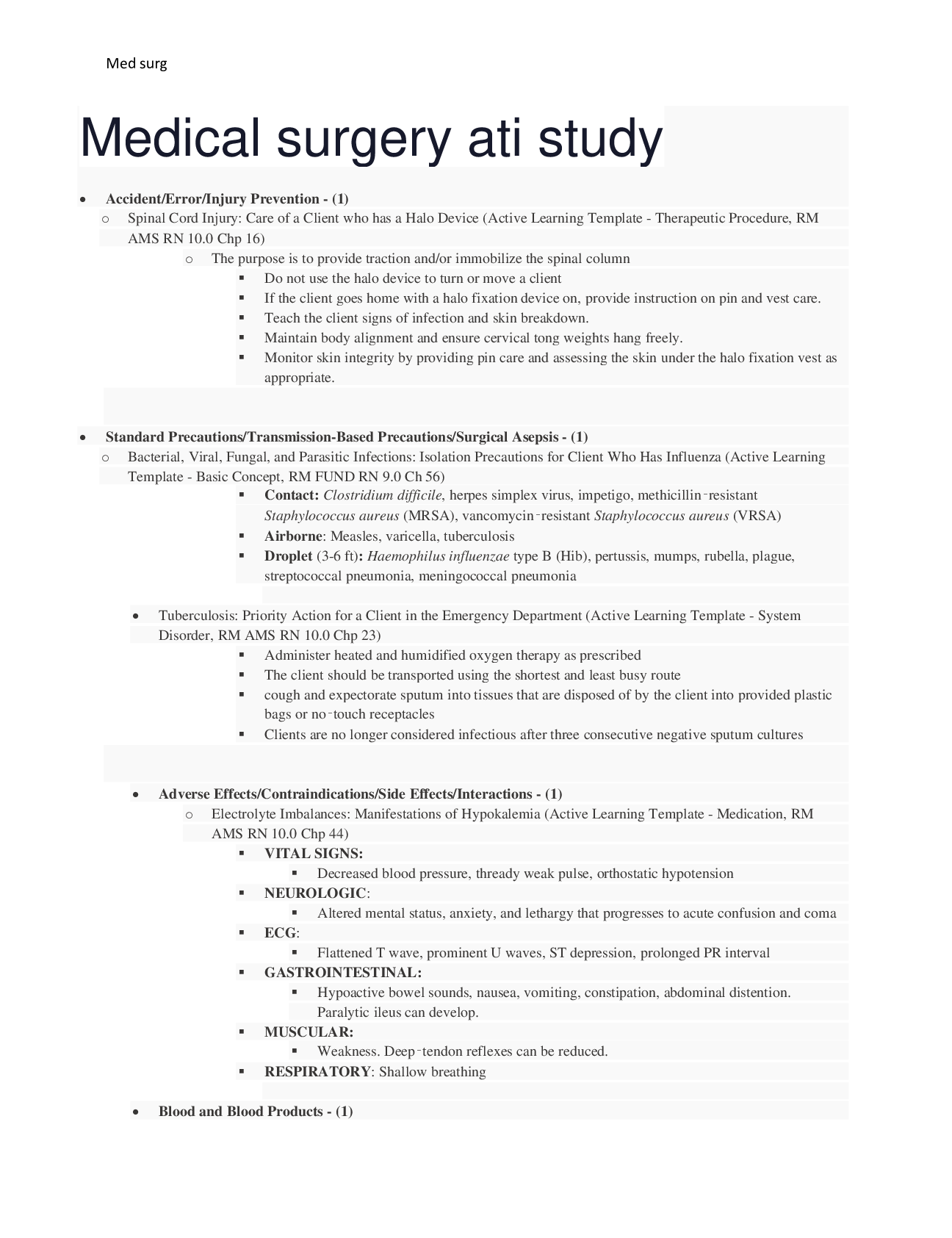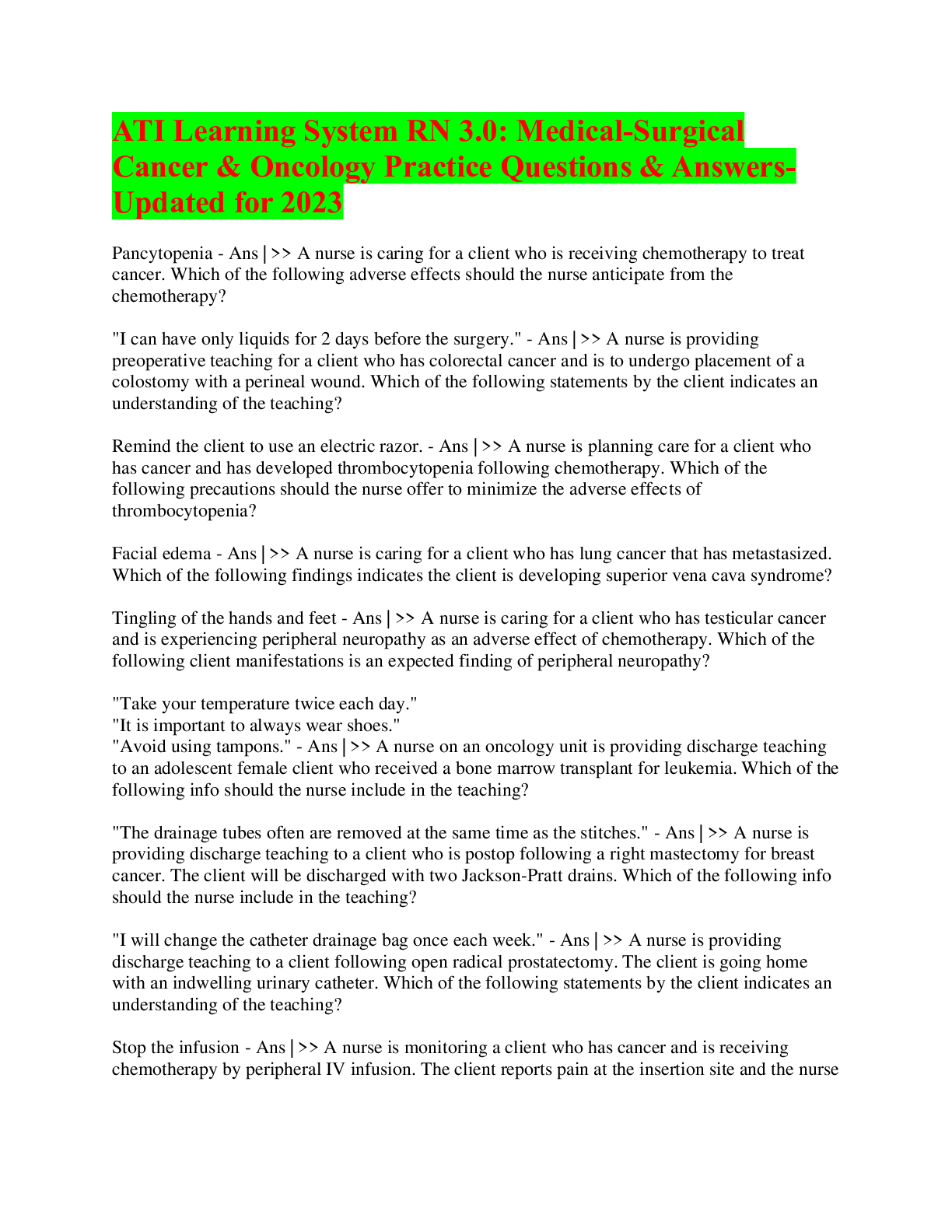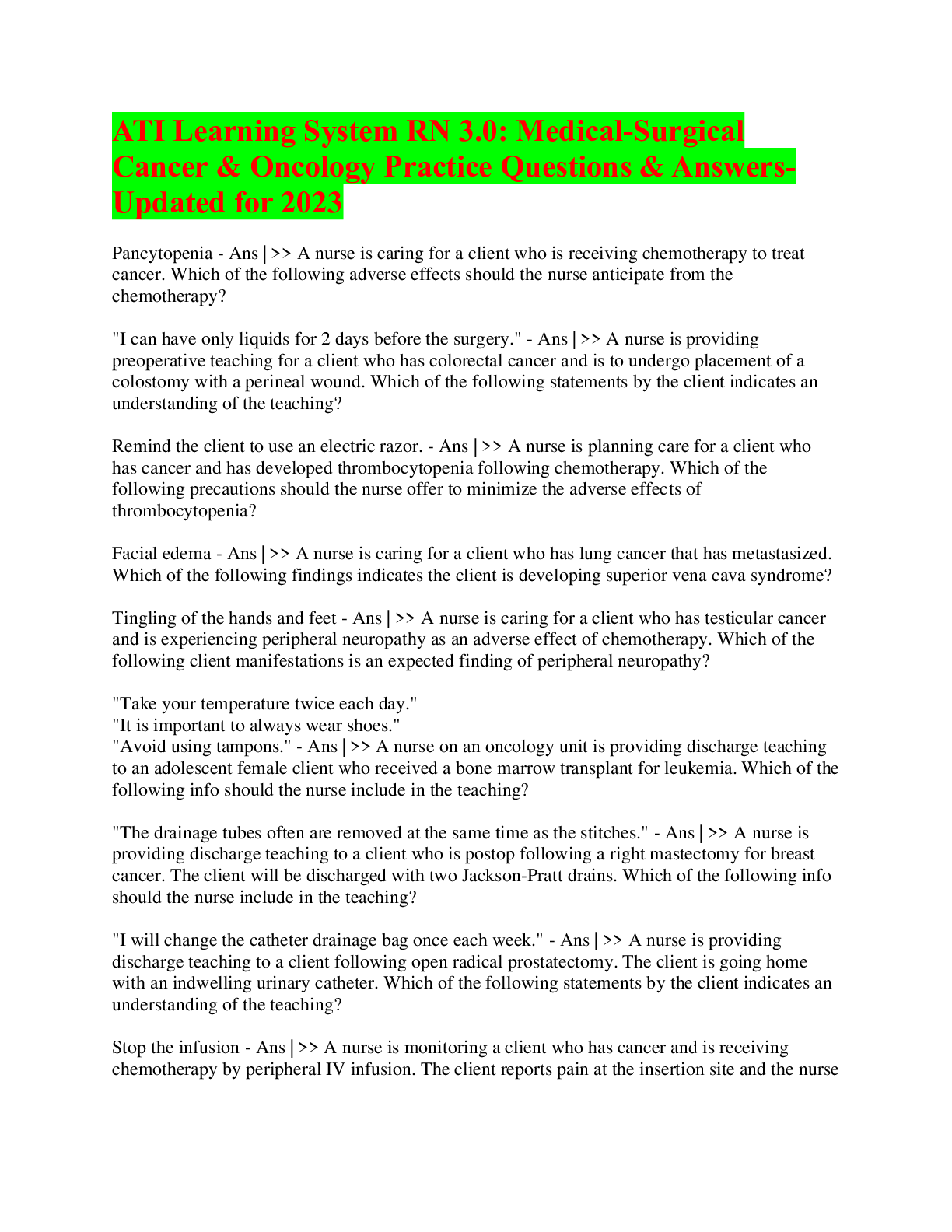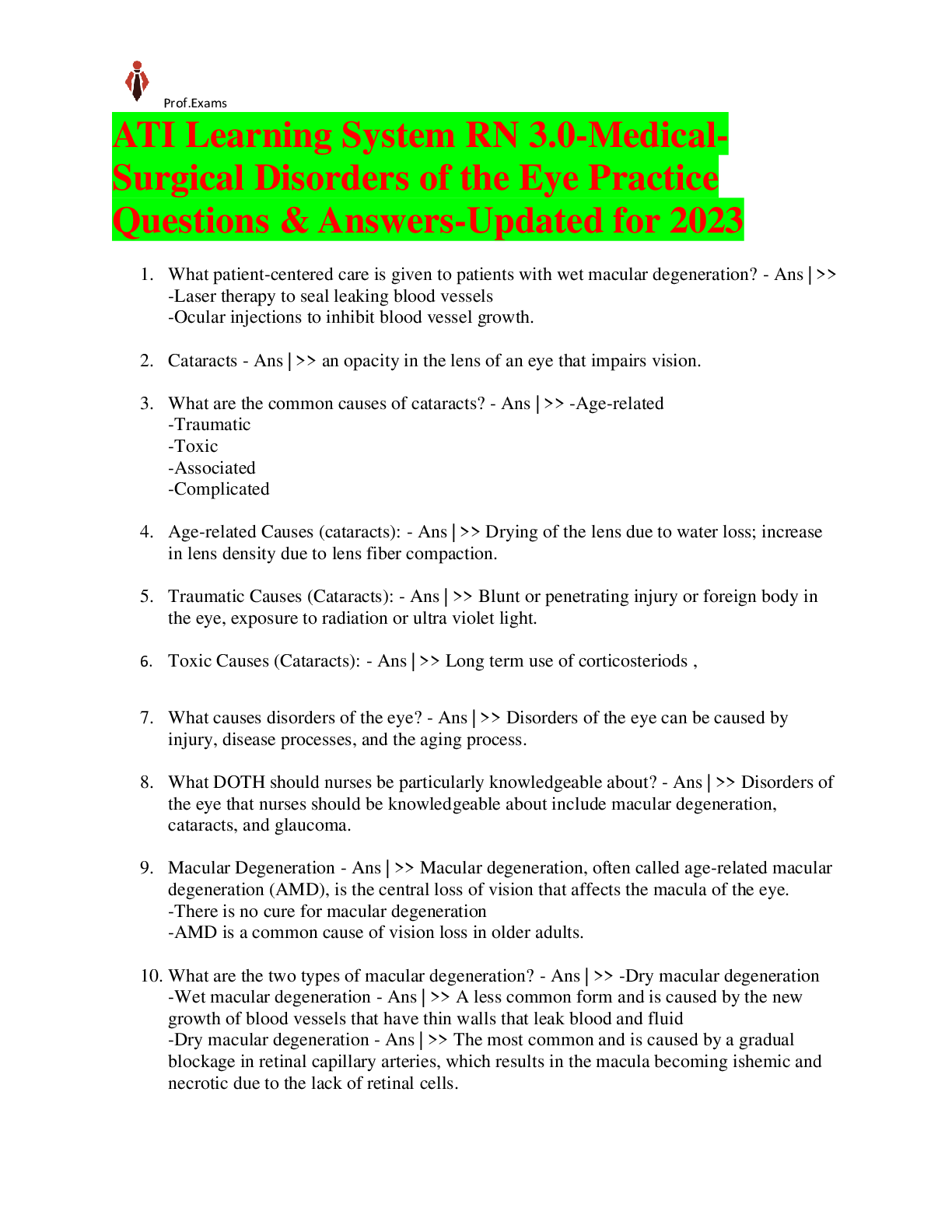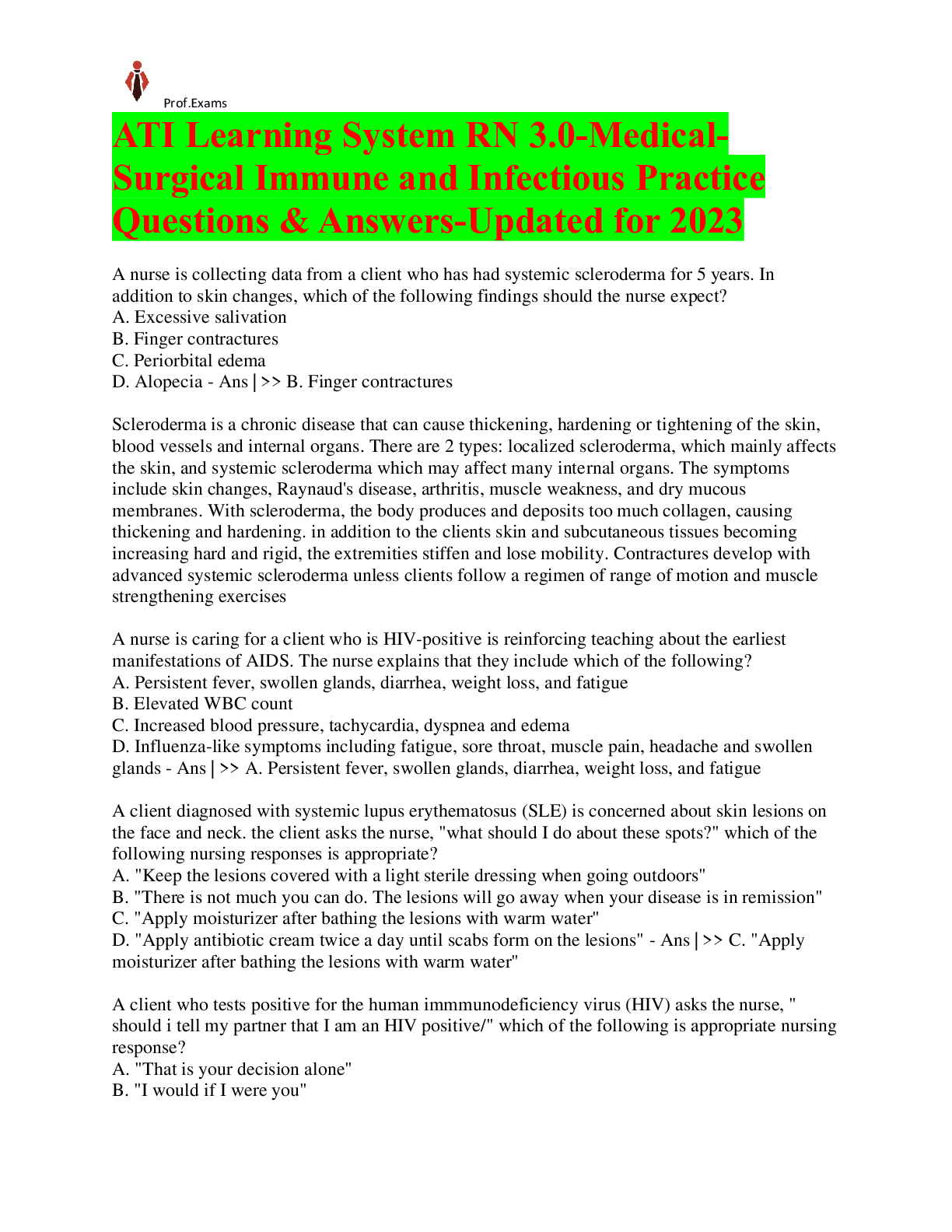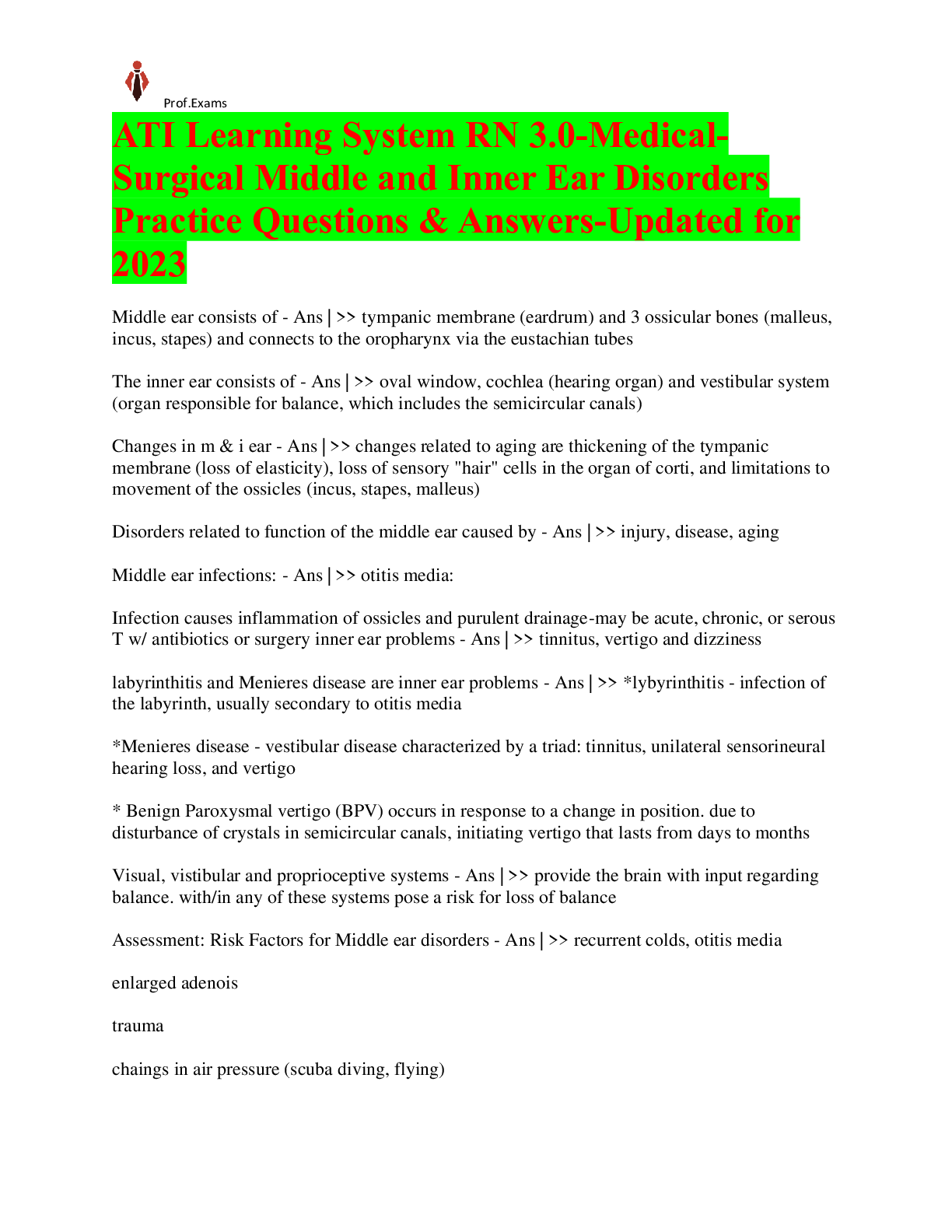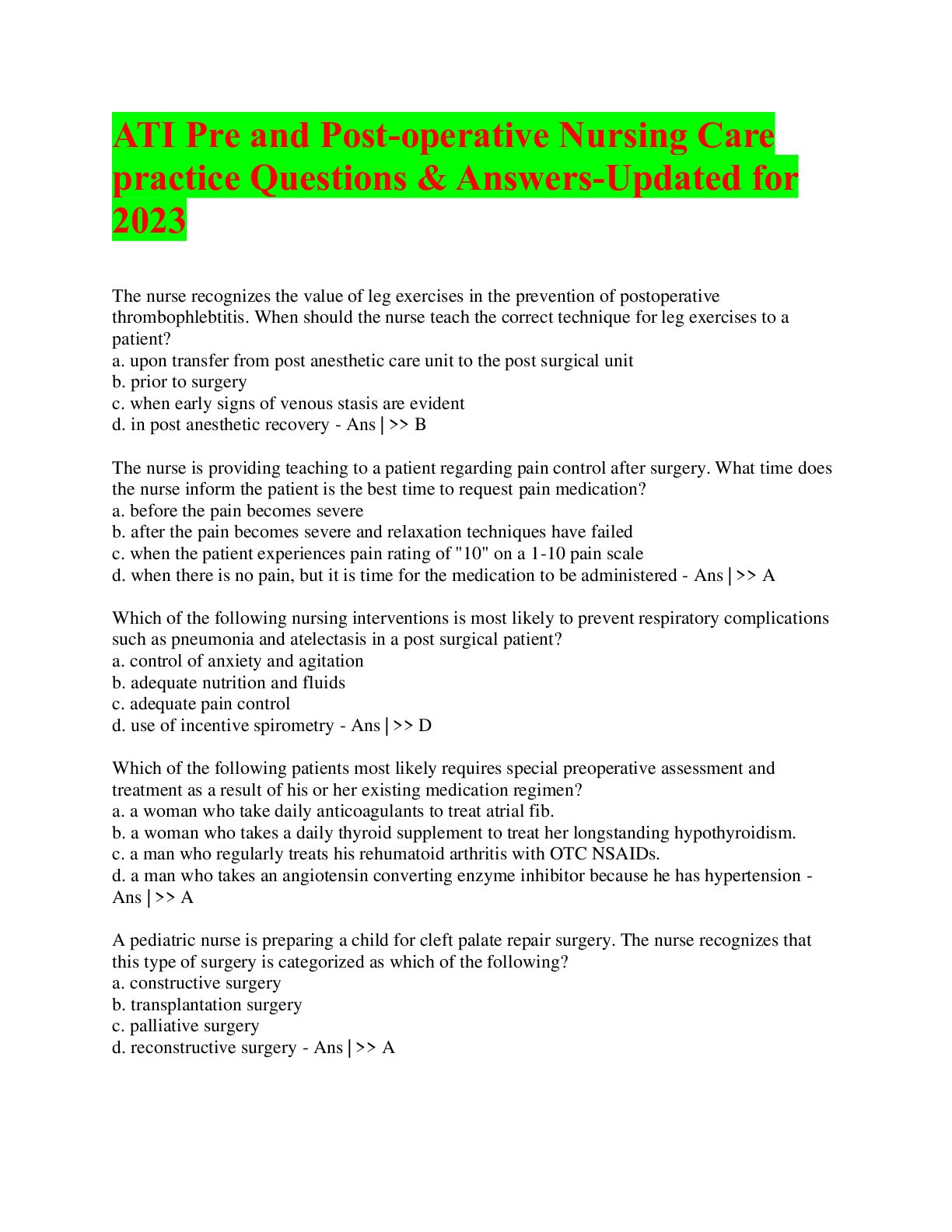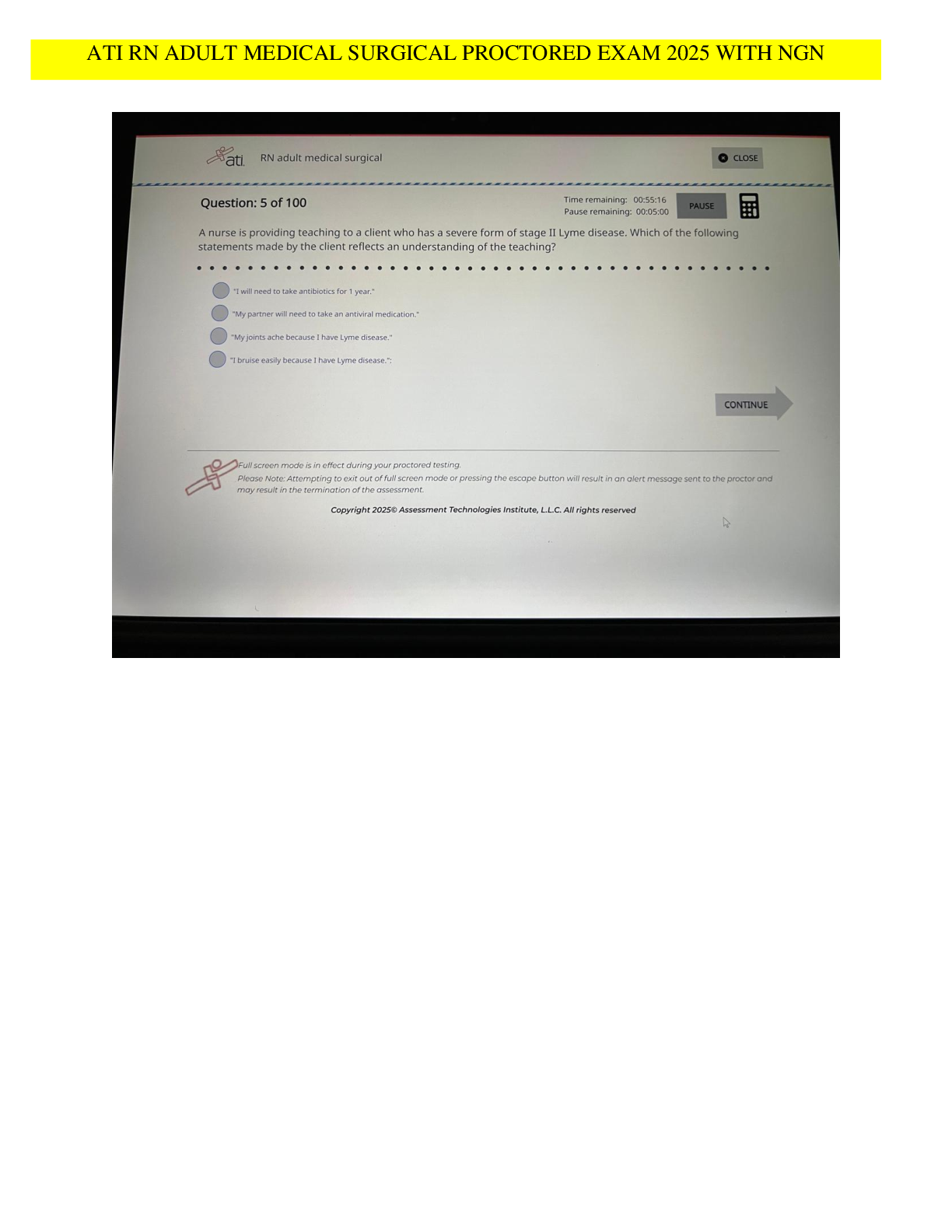*NURSING > ATI MEDICAL SURGICAL > ATI Learning System RN 3.0-Medical-Surgical Pre and Post-operative Nursing Care Practice Questions & (All)
ATI Learning System RN 3.0-Medical-Surgical Pre and Post-operative Nursing Care Practice Questions & Answers-Updated for 2023 Pass Medical-Surgical Pre and Post-operative Nursing Care in First Attempt Guaranteed!Get 100% Latest Exam Questions, Accurate & Verified Answers to Pass the Actual Exam! Instant Download!
Document Content and Description Below
ATI Learning System RN 3.0-Medical-Surgical Pre and Post-operative Nursing Care Practice Questions & Answers-Updated for 2023 Pass Medical-Surgical Pre and Post-operative Nursing Care in First Attemp... t Guaranteed!Get 100% Latest Exam Questions, Accurate & Verified Answers to Pass the Actual Exam! Instant Download! ATI Pre and Post-operative Nursing Care practice Questions & Answers-Updated for 2023 The nurse recognizes the value of leg exercises in the prevention of postoperative thrombophlebtitis. When should the nurse teach the correct technique for leg exercises to a patient? a. upon transfer from post anesthetic care unit to the post surgical unit b. prior to surgery c. when early signs of venous stasis are evident d. in post anesthetic recovery - Ans | >> B The nurse is providing teaching to a patient regarding pain control after surgery. What time does the nurse inform the patient is the best time to request pain medication? a. before the pain becomes severe b. after the pain becomes severe and relaxation techniques have failed c. when the patient experiences pain rating of "10" on a 1-10 pain scale d. when there is no pain, but it is time for the medication to be administered - Ans | >> A Which of the following nursing interventions is most likely to prevent respiratory complications such as pneumonia and atelectasis in a post surgical patient? a. control of anxiety and agitation b. adequate nutrition and fluids c. adequate pain control d. use of incentive spirometry - Ans | >> D Which of the following patients most likely requires special preoperative assessment and treatment as a result of his or her existing medication regimen? a. a woman who take daily anticoagulants to treat atrial fib. b. a woman who takes a daily thyroid supplement to treat her longstanding hypothyroidism. c. a man who regularly treats his rehumatoid arthritis with OTC NSAIDs. d. a man who takes an angiotensin converting enzyme inhibitor because he has hypertension - Ans | >> A A pediatric nurse is preparing a child for cleft palate repair surgery. The nurse recognizes that this type of surgery is categorized as which of the following? a. constructive surgery b. transplantation surgery c. palliative surgery d. reconstructive surgery - Ans | >> A A PACU nurse has received a semiconscious patient form the operating room and reviews the chart for orders related to positioning of the patient. There are no specific orders on the chart related to specific orders for the patient's position. in this situation, in what position will the nurse place the patient? a. supine b. prone c. side-lying d. trendelenburg - Ans | >> C A patient is returning to the floor after orthopedic surgery is complaining of nausea. the nurse is aware that an appropriate intervention is to do which of the following? a. avoid strong smelling foods b. hold all meds c. provide clear liquids with a straw d. avoid oral hygiene until nausea subsides - Ans | >> A The operating room is aware that which of the following patients are at a greater risk related to a surgical procedure? a. an 8 year old boy b. a 48 year old man c. an 83 year old woman d. a 34 year old woman - Ans | >> C The nurse has entered the room of a patient who is postop day one and found the patient grimacing and guarding her incision. The patient refuses the nurse's offer of PRN anlgesia and on discussion, states that this refusal is motivated by his fear of becoming addicted to pain meds. How should the nurse respond to the patient's concerns? a. "Actually people who are not addicted to drugs before thier surgery never develop a tolerance or addiction during recovery." b. "The hospital has excellent resources for dealing with any addiction that might result from the pain med you take." c. "Research has shown that there is very little risk of patients becoming addicted to painkillers after they have surgery." d. "You should remind yourself that treating your pain is important now, and that dealing with any resulting dependency can come later." - Ans | >> C A 51 year old woman with a dx of breast cancer has been scheduled for a unilateral mastectomy. Which of the following categorizations of surgical procedures are represented in this case? a. diagnostic b. constructive c. reconstructive d. palliative e. ablative - Ans | >> A, E The telemetry unit nurse is reviewing lab results for an operative procedure later in the day. The nurse notes on the lab report that the pt has a serum potassium level of 6.5 mEq/L. The nurse informs the physician of this lab result because the nurse recognizes this increases the pts risk for which of the following? a. infection b. cardiac problems c. bleeding and anemia d. fluid imbalances - Ans | >> B The nurse is preparing a pt for a colonoscopy. The nurse is familiar with the colonoscopy procedures at the hospital and is are that which type of anesthesia is commonly used for this procedure? a. conscious sedation b. spinal anesthesia c. epidural anesthesia d. nerve block - Ans | >> A The nurse is preparing to send a patient to the operating room for an exploratory laparoscopy. The nurse recognizes that there is no informed consent. The nurse informs the physician who is performing the procedure. The physician asks the nurse to obtain the informed consent signature from the pt. What is the nurses best action to the request? a. Inform the physician that it is his or her responsibility to obtain the signature b. inform the physician that the nurse manager will need to obtain the signature c. call the house officer to obtain the signature d. obtain the signature and ask another nurse to cosign the signature - Ans | >> A A 54 year old female pt has been scheduled for a bunionectomy which will be conducted on an ambulatory basis. Which of the following characteristics applies to this type of surgery? a. the pt will be admitted the day of surgery and return home the same day b. the surgery is classified as urgent rather than elective c. the surgery will be conducted using moderate sedation rather than general anesthesia d. the pt must be previously healthy with low surgical risks - Ans | >> A Upon assessment, a pt reports that he drinks 5-6 beers every evening after work. Based upon this information, the nurse is aware that the pt may require which of the following? a. larger doses of anethetic agents and larger doses of post op analgesics b. lower does of anesthetic agents and lower does of post op analgesics c. larger does of anesthetic agents and lower does of post op analgesics d. lower doses of anesthetic agents and larger doses of post op analgesics - Ans | >> A Following a successful coronary artery bypass graft, a 71 year old male pt has been transferred to the PACU. What is the priority for the pt's nursing care during this stage of recovery? a. protecting and maintaining airway b. positioning the pt to prevent skin breakdown c. treating the pts pain d. preventing incisional infection and monitoring for s/s of infection - Ans | >> A. [Show More]
Last updated: 2 years ago
Preview 1 out of 86 pages

Buy this document to get the full access instantly
Instant Download Access after purchase
Buy NowInstant download
We Accept:

Reviews( 0 )
$14.00
Can't find what you want? Try our AI powered Search
Document information
Connected school, study & course
About the document
Uploaded On
May 04, 2023
Number of pages
86
Written in
Additional information
This document has been written for:
Uploaded
May 04, 2023
Downloads
0
Views
105




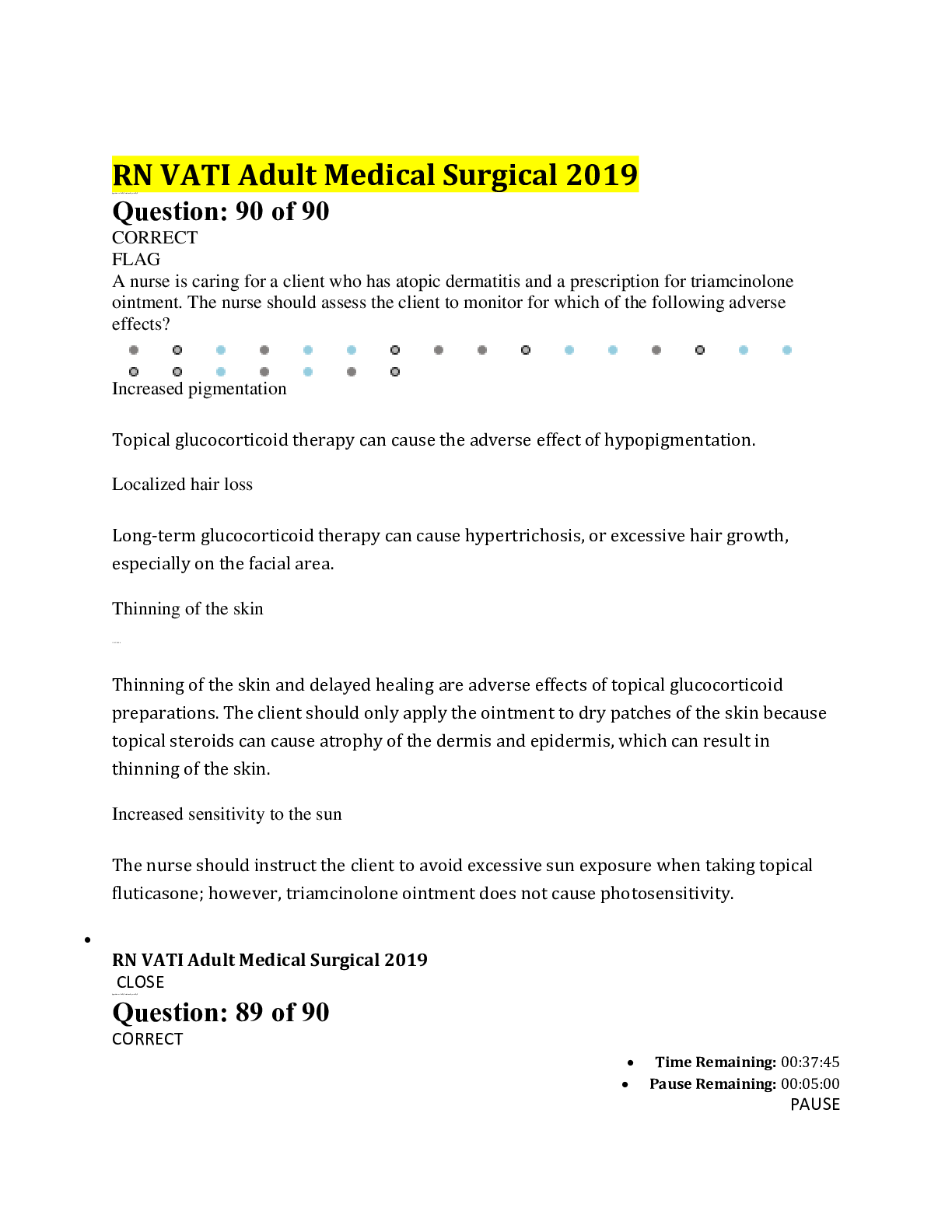


.png)
